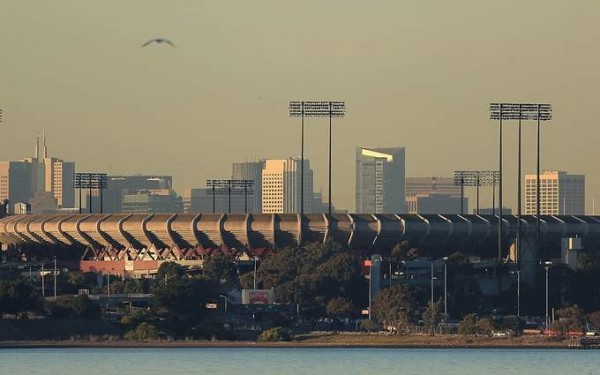
What’s next for Candlestick Park? (转)
What’s next for Candlestick Park?
Likely more than a year after Monday’s final regular-season 49ers home game, developers will destroy what a devastating earthquake could not, leveling Candlestick Park for retail and residential construction.
An earlier-than-expected 49ers departure to Santa Clara next year has accelerated plans for the stadium site within the massive Hunters Point/Candlestick Point project. The first homes are going up within the former shipyards and in four years a huge outdoor urban shopping center is set to rise where the stadium stands.
“The 49ers moved along at a very good clip. We moved our timeline up. It’s a great piece of property and enables us to move faster to realize the program, dream and vision,” said Kofi Bonner, regional vice president for Lennar Communities, the developer chosen by the city of San Francisco.
In planning since 1999, the project began as an effort to build a new football stadium with housing, retail and office space.
With the 49ers ultimately pulling up stakes in San Francisco, the master plan for the nearly 800 acre area features 12,500 residences, 800,000 square feet of retail and more than 3 million square feet of office, research and development space. Parks, trails and open space would span some 320 acres.
“So this is a big, big development project, over a couple decades, and the work is already underway. This is gonna be one of San Francisco’s newest and more robust neighborhoods a generation from now,” said Phil Ginsburg, general manager for the city of San Francisco Recreation and Parks.
The retail hub for the project is the stadium site.
The shopping center will be outdoors, anchoring the project’s Candlestick Point portion. In addition to parking and transit services, plans also call for a hotel, 500 condominiums and apartments, and a 2,000-to-4,000-seat entertainment venue on the stadium site.
But first, the concrete edifice that is Candlestick Park must come down. Demolition is expected in late 2014 or early 2015.
Leveling the 12-story stadium constructed from 50,000 cubic yards of concrete and 9,000 tons of steel is a science of sorts. Not yet known is whether Candlestick comes down in a day or longer.
“We have to determine what’s left in the stadium that we can demolish quickly and what we need to deconstruct,” said Bonner, noting that dust is a major issue. “It’s a big building adjacent to an existing neighborhood.”
While the demise of Candlestick looms, there is life left in the old hulk.
Beyond the 49ers final home game are events planned over the next year. This year, for instance, Candlestick hosted a U.S. Women’s National Team soccer match and a concert by Justin Timberlake and Jay-Z.
“Like we do every offseason, we’re going to continue to keep Candlestick active and welcoming. And we’ve got a number of events big and small planned,” Ginsburg said. “We’re going to do a couple of unique things in the coming year as part of the farewell celebration for Candlestick.”
A final community day will allow fans to say goodbye to Candlestick, with the Giants and 49ers involved.
“One final fan fest, if you will,” Ginsburg said.
By then, the stadium’s remaining tenant — the 49ers — likely will have moved out.
The team has until January to exercise an option to terminate their lease, now set to run through 2015.
Expectations are that Lennar will acquire the site sometime during fall 2014. So the developer has moved up work on the stadium site toward the front end of the timeline for the 20-year Hunters Point/Candlestick Point project.
Bordering the stadium site will be the remainder of the Candlestick Point area. Half of the project’s total housing — condominiums, townhomes and apartments — will go up there in addition to office space.
The existing street grid of the Bayview district will be extended toward the waterfront with landscaped roadways.
Between the buildings and San Francisco Bay is the Candlestick Point State Recreation Area, an urban park developed on 170 acres of landfill.
Development is planned in phases, with a balance among housing, commercial buildings and parklands.
“There will be urban life along with a very sustainable program,” Bonner said. “We want to make sure this feels like a part of San Francisco since day one.”

